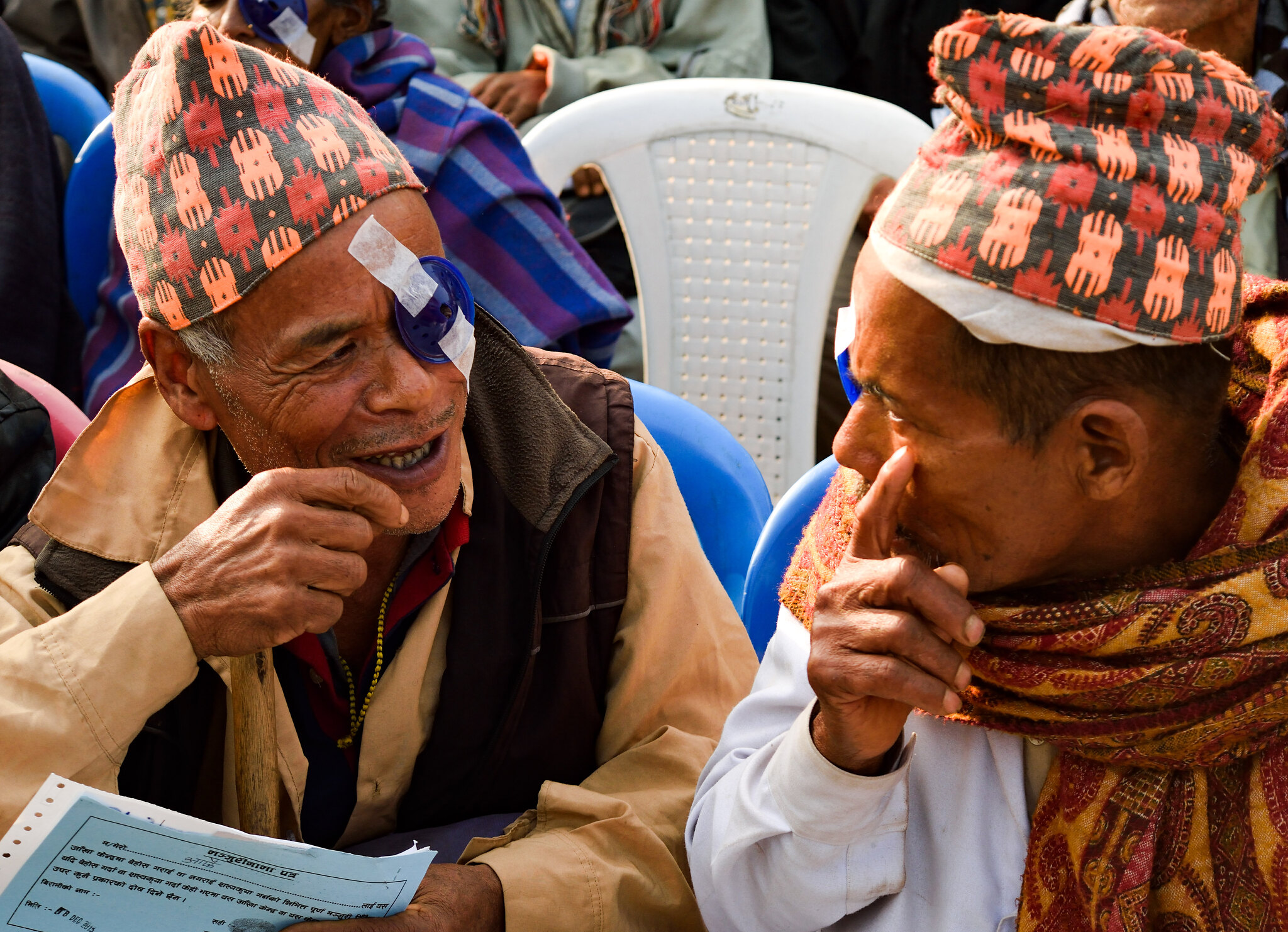Cataract surgeries in Nepal. Photograph: Shyam
Cataract is the leading cause of blindness globally, and a major cause of vision impairment, affecting an estimated 94 million people in 2020. The scale of this challenge is not spread equally however, with some places and population groups experiencing much higher prevalence of the potentially blinding condition, despite surgery being a highly cost-effective treatment.
A new global study led by the International Centre for Eye Health has identified the groups most underserved by cataract services in different world regions, as well as the most promising strategies to improve access of these groups. This information is useful as countries respond to the ambitious global target set by member states at the 74th World Health Assembly to increase effective cataract surgical coverage (ecsc) by 30 percentage points by 2030. Ecsc is a measure of how many people with cataract needing surgery have received it with a good outcome.
The study used a Delphi process, a widely used expert consultation method, to identify and prioritise underserved groups and promising strategies. The process included 183 panellists who are knowledgeable about cataract services. The panel was made up of 46% women and included representatives from all seven Global Burden of Disease (GBD) Super Regions.
Panel members were asked which groups in their setting experienced the most difficulty accessing cataract services, followed by what interventions in their area are most effective at increasing their access to both screening and surgical services. Panellists were encouraged to include as many opinions as possible to maximise the chance of identifying the most important ideas.
Following a prioritisation process, at the global level the groups ranked highest in terms of being a large group and having the most difficulty accessing services were rural/remote dwellers, people with low socioeconomic status and people with low social support. Other groups which were considered to be smaller than these three but having the most difficulty with access were people without housing and people with disabilities. Despite evidence showing that women have lower access to cataract services in most world regions, panellists tended not to identify women as an underserved group.
In terms of strategies to improve access to screening services, the study group considered the most promising strategies to be policy development for primary care screening programmes and strengthening the skills of primary care staff. Further strategies included establishing permanent services closer to the community level and eliminating the out-of-pocket costs for patients that need care. Potential solutions for reducing costs, which can prevent people from travelling to or paying for the care they need, were free screening, including screening within insurance coverage and providing transport.
Panellists thought access to surgical services could be improved by decentralizing services so that surgery was permanently available at the district level or below. Strengthening integration between screening, referral, surgery and follow-up, reducing out-of-pocket costs for surgery and post-operative care, providing universal health insurance that includes cataract surgery and delivering good quality outcomes were also prioritised as good strategies.
This is believed to be the first study to attempt these specific questions, and the answers highlight the need for context-specific approaches to improve access to cataract services and promote equity.
Recommendations from the study that can be considered by governments and their partners in pursuit of improvements in ecsc include:
- Supporting health information systems to strengthen monitoring of inequality and provide evidence for policy and planning
- Including social variables in the most commonly implemented survey tool, the Rapid Assessment of Avoidable Blindness
- Including the intersection of gender with other social attributes in future research to consider the disproportionate disadvantage experienced by some women
When planning services, each global region can refer to the list developed in this research for the activities most promising and feasible in their setting. The study can serve as a ‘menu of strategies’ that can be tested, alone or in combination with others to improve services within an area.
The authors believe these results can serve eye health decision-makers, researchers and funders as a starting point for coordinated action to improve access to cataract services, particularly among population groups who have historically been left behind.
Publication: Ramke J, Silva JC, Gichangi M, The Cataract Access Study Group, et al. Cataract services for all: strategies for equitable access from a global modified Delphi process. PLOS Global Public Health. February 2022. https://doi.org/10.1371/journal.pgph.0000631

